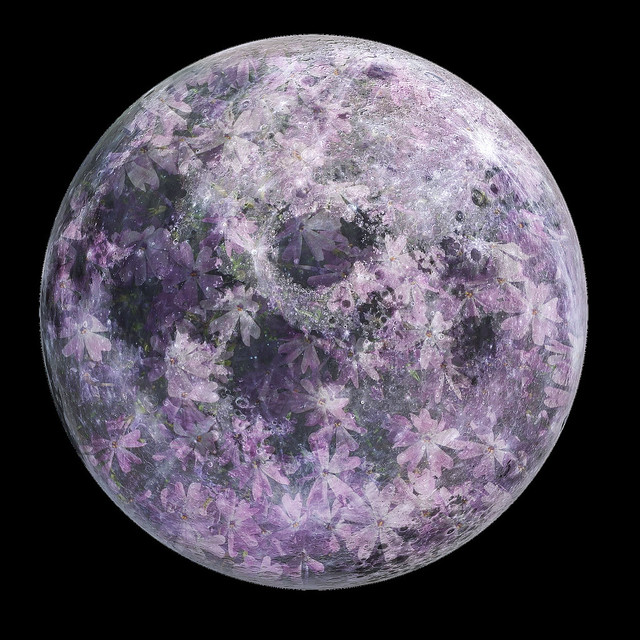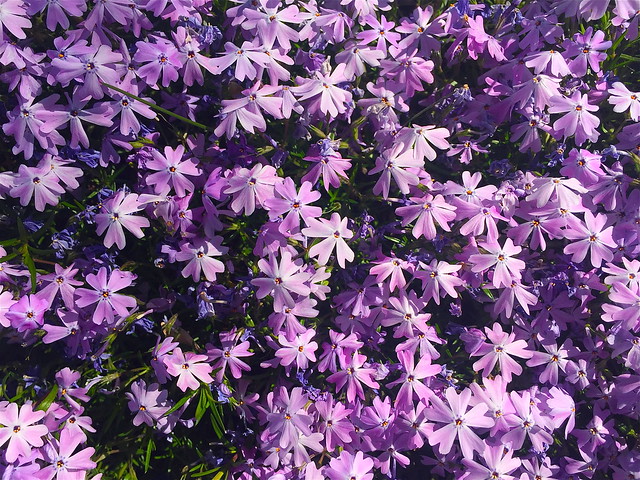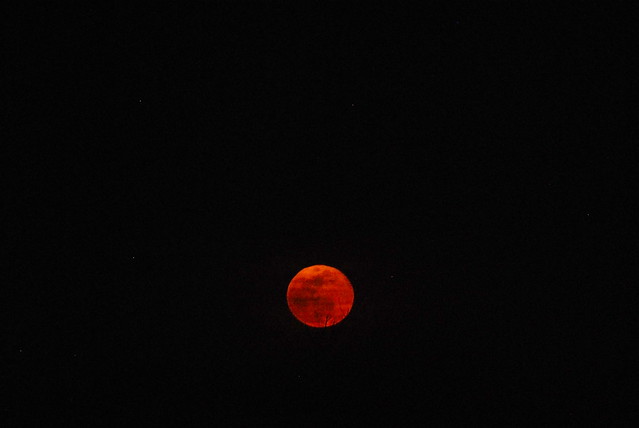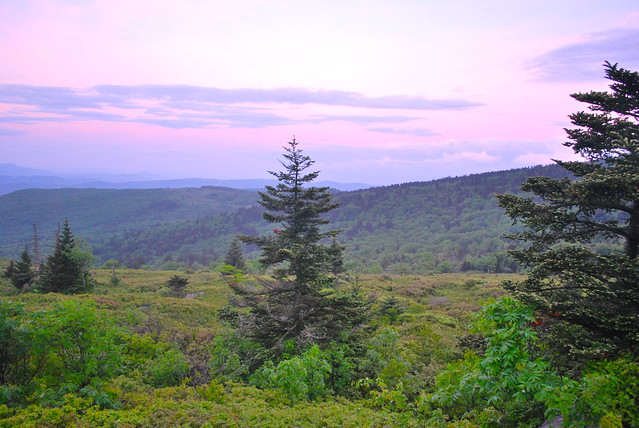Open fires are prohibited throughout the park from midnight to 4 p.m. through April 30 per the 4 p.m. Burning Law. This includes wood and charcoal. Gas is permissible. Campground fires are allowed during the restricted time if a camp host is on duty and signage to that effect is posted in the campground. Failure to observe the 4 p.m. Burning Law can result in a fine. Contact the Park Office for additional information.
Read Our Blogs
Full Moon of the Month: Pink Moon
This is our second installment of the full moon names, we’ll also discuss colors as they relate to Earth’s only natural satellite.
Our next full moon is tomorrow night, on April 22, 2016 and just so happens to be right around Earth Day (See how you can help make a difference this Earth Week).

Don't expect April's Pink Moon to appear pink like this digital rendition
April’s full moon is commonly called the Full Pink Moon. It won’t look pink though, the name refers to wild phlox, a type of flower often blooming from early spring through May. The word phlox originates from a Greek word meaning "flame."

Phlox come in shades of pink, purple, and white
Large patches of these five-petaled beauties are seen adding color to our view in the wild as well as landscape designs. Several subspecies exist and early pollinators especially like finding them.
While this full moon won’t be pink, moons do sometimes appear red or orange. Anyone who’s noticed this phenomena may have also noticed it only glows this color when the moon has just risen or hangs low on the horizon. As the moon appears to rise higher (from Earth’s rotation) it regains the typical white glow of reflected sunlight contacting our eyes.

I captured this image of the March 23 Full Worm Moon appearing orange when it first rose
April's Pink Moon will also be a micro-moon, the opposite of a supermoon. It’ll be farther away than average, the farthest away of any full moon this year in fact, making it appear just a tad smaller. This is thanks to the fact the moon doesn’t orbit Earth in a perfect circle but a slightly flattened circle, or ellipse.
If you like visuals, pay close attention to the horizontal line in the middle of the visual below showing the distance between Earth and the Moon throughout 2016. The Moon’s range varies between a distance of 28 to 32 Earths lined up, with this Pink Moon nearly 32 Earths away.
Credit: NASA's Scientific Visualization Studio
So what makes the moon look red?
It can be complicated, but it’s actually pretty simple. When the moon is low on the horizon, the light hitting our eyes travels farther compared to when the moon is higher up. Light traveling farther is more likely to be scattered and bounced around more by more dust particles in the atmosphere.
It’s the same reason sunsets give us those bright reds and oranges and pinks low on the horizon.

Pink sunrise on the balds above Grayson Highlands State Park
Light gets scattered and absorbed differently with distance. Some of us remember from school that visible light consists of different colors added together (think of rainbows and ROYGBIV). Also, this is the same reason sunrises and sunsets can be very vivid after wildfires, because the smoke means there are more particles in the air for the light to travel through, like a big plink-o board of obstacles.
Red and orange moons happen when particles scatter blue light while leaving the red wavelengths intact.
On much rarer conditions, ash from volcanoes and certain wildfires create larger than average particles, doing the opposite and scattering red light, and actually making a moon look blue. This is unpredictable and extremely rare.
We'll discuss the other type of "blue" moon next month, when we'll be having one.
The moon has a rich and colorful history with humanity. Keep an eye out to the east for the Pink Moon when it first rises, you just might catch a red or orange glow to it.
If you have read the article and have a question, please email nancy.heltman@dcr.virginia.gov.
Search for blogs
By Park
Categories
Cabins
Camping
Fishing
History and Culture
Other
Programs and Events
Trails
Volunteers
Water Fun
Archive
2024
2023
2022
2021
2020
2019
2018
2017
2016
2015
2014
2012














